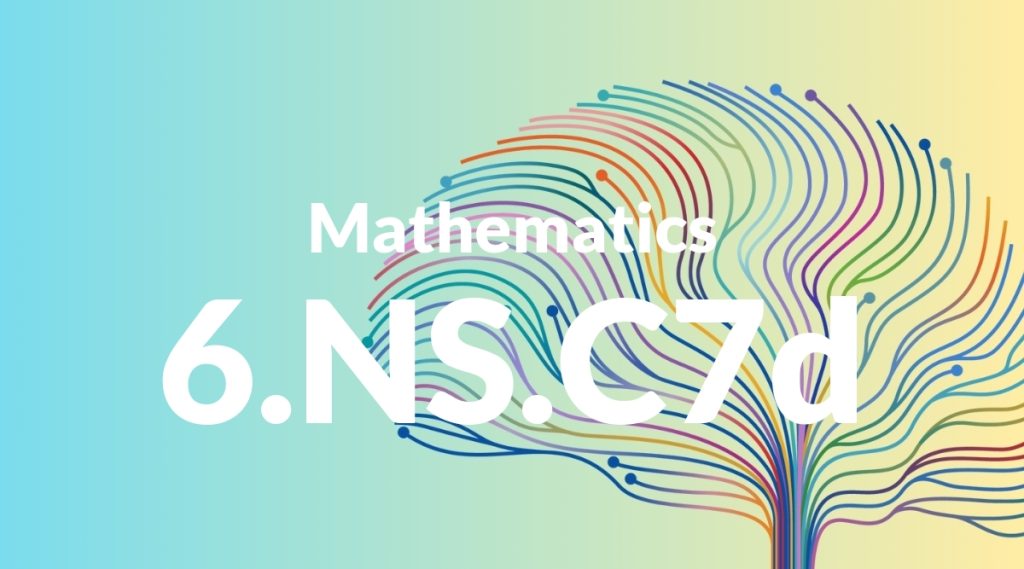Standard: 6.NS.C7d – Distinguish comparisons of absolute value from statements about order. For example, recognize that an account balance less than -30 dollars represents a debt greater than 30 dollars.
Grade level: Grade 6
Subject: Mathematics
Domain: The Number System
Teacher Overview
This standard focuses on helping students understand the difference between absolute value and the order of numbers. Mastery of this concept is crucial for their ability to reason about and solve problems involving rational numbers and their applications in real-world contexts. Students should be comfortable with positive and negative integers, basic arithmetic operations, and the concept of absolute value.
Students will advance to solving problems involving the four operations with rational numbers and will begin to tackle equations and inequalities.
Common Misconception 1
Students may incorrectly believe that a larger negative number is greater than a smaller negative number. This misconception arises because students often focus on the magnitude rather than the position on the number line.
Intervention 1
Use visual aids such as number lines to compare negative numbers and emphasize that a larger negative number is actually less than a smaller negative number.
Common Misconception 2
Students might confuse absolute value with the number’s sign, thinking that the absolute value of a negative number is also negative.
Intervention 2
Provide exercises that clearly differentiate between the absolute value and the original number’s sign, using contextual examples like financial debts and elevations.
Prerequisite Knowledge
Students should have a foundational understanding of positive and negative numbers, basic operations with integers, and the concept of absolute value.
Subsequent Knowledge
Students will develop the ability to solve real-world and mathematical problems involving the four operations with rational numbers, and they will learn to reason about and solve equations and inequalities.
Instructional Activities
- Number line exercises comparing negative and positive values
- Real-world scenarios involving financial debts and credits
- Interactive games comparing temperatures in different cities
- Group activities analyzing sports scores and deficits
- Class discussions on elevations below and above sea level




